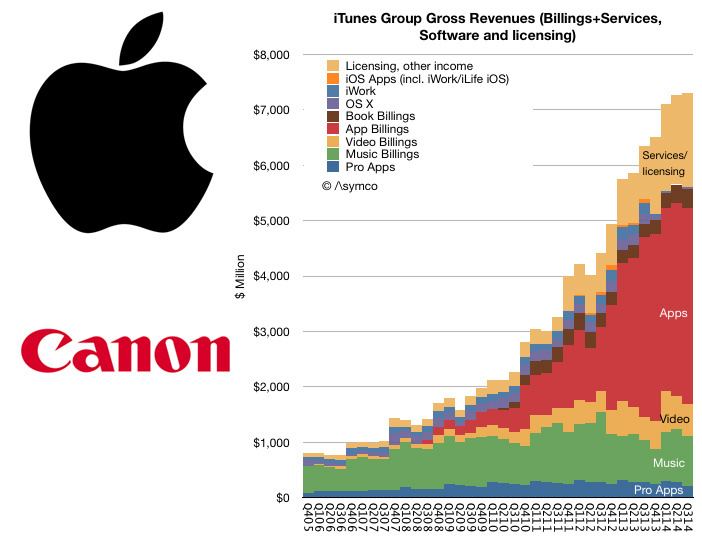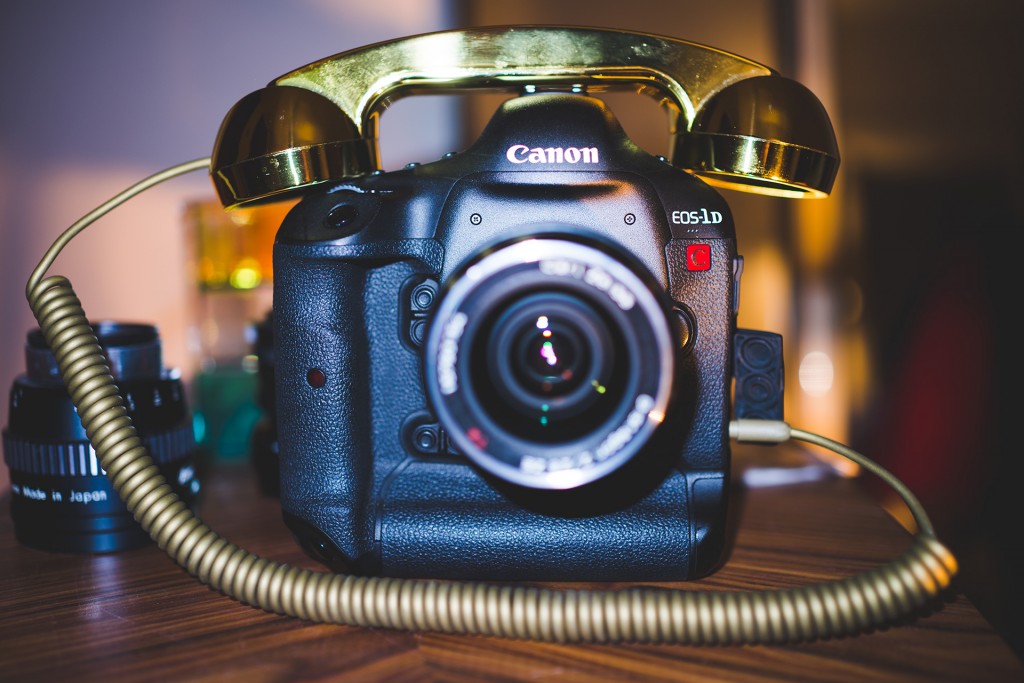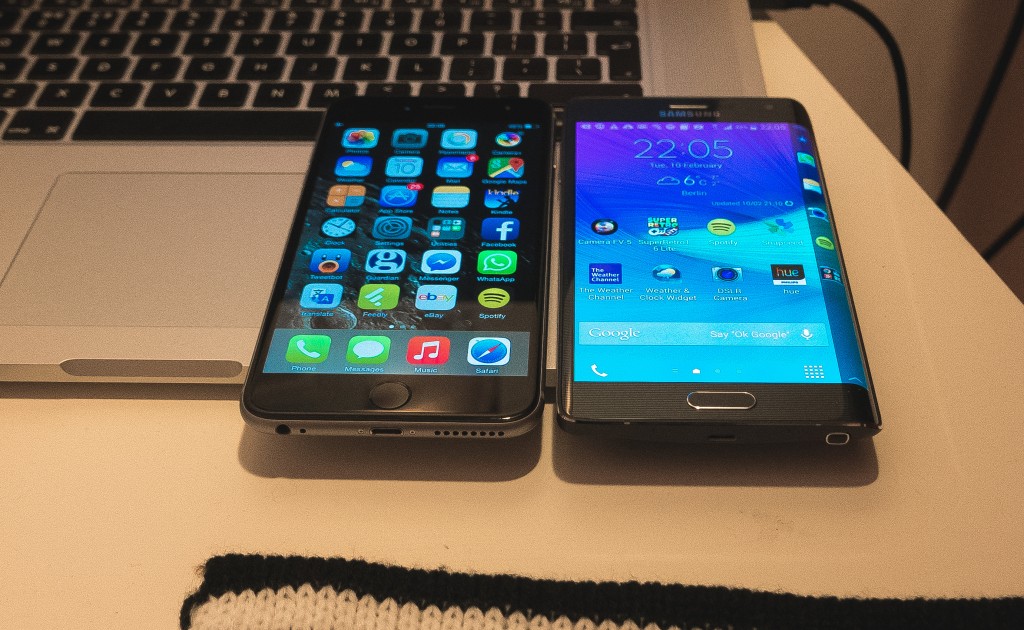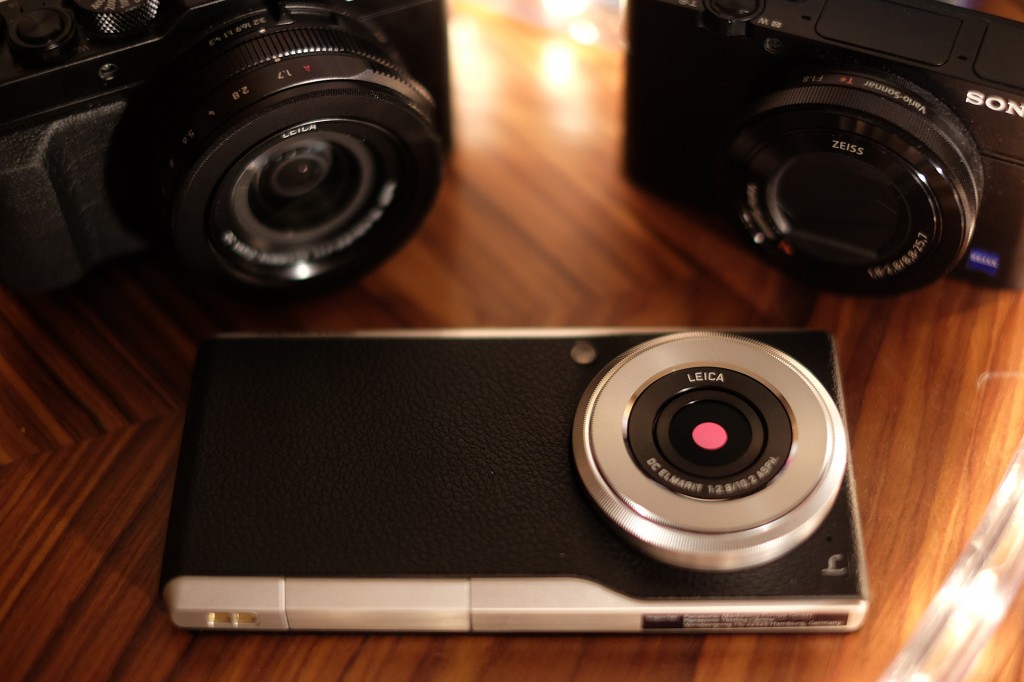It’s well known that DSLR sales are sliding now, following the worrying trajectory of compact cameras.
Then I read with great interest Vincent Laforet’s prediction that the era of stand-alone cameras is coming to an abrupt end for the mass market.
There was a very key chart in that blog post which you can see above. I believe it speaks volumes about why the mass market is migrating from hardware focussed imaging tools like DSLRs to innovative new growth areas like apps and services orientated smartphones.
Incidentally in our own little world of DSLR video, this is also why Canon were so utterly wrong to dismiss Magic Lantern as a intolerable ‘hack’.
Let’s diagnose the problem and suggest the solution…
I think the industry is having trouble even diagnosing the cause let alone coming up with a solution. Only once you realise why the disaster is unfolding, can you suggest how to fix it!
Dramatically reduced mass market appeal and usage incentives
DSLRs are not a mass market product any more, they are fading into a niche of pro and enthusiast products. I think panicked by plunging sales of lower end consumer cameras, many manufacturers have already refocused their efforts on higher end cameras and ones with unique selling points like 4K video, which is great for us! But they will eventually need to rebuild the wider consumer market because it’s going to collapse.
The most common suggestion is that the smartphone has made stills cameras obsolete, for all but specialist tasks or enthusiasts and pros.
Actually it is the changing way people are consuming images that has done the damage to camera sales.
It’s also about the social and personal incentives behind image taking.
Our incentive to shoot as filmmakers is about out love of the craft, self expression, enthusiasm about the technology and technique, the buzz from creating and acting on ones talent. For pros it is that, plus making a living.
For average consumers and the mass market where huge sales are, the incentive is heavily biased towards self expression and sharing.
The biggest problem with consumer DSLRs is that the vast majority of people just offload their memory cards to their laptop and forget the photos ever existed, leading to a real lack of desire to pick up and use the DSLR let alone to go and buy a new one. The internet, social networking and online communities give people a massive incentive to shoot with a smartphone. It’s immediate, it’s simple, it’s connected, it’s always on you, it’s (sometimes) high quality.
You cannot simply give a DSLR this digital culture like they bolted on a digital sensor to the film SLRs. They are not going to fix this problem by simply tweaking the formula, like Canon are doing again and again with their DSLRs. No WiFi button is going to fix it!
It requires a completely different concept and this concept might even be entirely software!
These days the masses of consumers do NOT on the most part compile physical prints or photo albums. The way people consume images have moved from the physical realm to online. Sharing has changed, we share in small bite sized chunks and it has changed even between immediate family and friends in the same room together.
The DSLR is now like a 1970’s SLR without a dark room, without a lab, without a photo album. What’s the point?
Furthermore, for most people it isn’t the technology or the methodology used to create the image that gives them an incentive, but the content, the act of sharing that content and their ego.
Self expression before the internet was done in physical form – prints, albums, projection, etc.
This started to change as far back as the mid 90’s with email and chat boards.
It’s the internet not the smartphone which is REALLY going to kill massive amounts of DSLR sales in the very near future.
It is Facebook and Twitter which are the real enemies of mass market DSLR sales success.
But now a disclaimer!
When too many camera market analysts speak about the problem they tend to make broad sweeping generalisations about camera design which doesn’t help anyone. For one thing the pro and enthusiast photography market isn’t going to die and there will always be room for specialist devices that excel at complexity and powerful specifications. Simply dumbing down camera controls or adding ‘favourite’ or ‘WiFI share’ buttons to all DSLRs even the pro ones is an abject waste of time.
Furthermore, to try and compete with Apple or Microsoft through camera orientated smartphones like the Panasonic CM1 poses a problem too. You can’t suddenly wrench people from their digital eco-system and get them to adopt a completely different user interface, a different user experience and a much lower grade of material and design aesthetic, replacing their beloved iPhone altogether. You just cannot do it. Also, the stand-alone camera-smartphone simply cannibalises their own camera sales.
What Canon, Sony, et al should be doing is thinking about how they supply accessories for smartphones that seamlessly integrate and enhance the online platform they sit on.
Nikon, Panasonic and all the others are not software or app companies but they are going to need to be since their market has moved online.
They should be hiring the best software designers in the world to create apps for iOS and Android and building online communities for image sharing.
Had they done this MUCH earlier they’d have owned something like Instagram and could sell Instagram related innovations and accessories to a mass market of hipsters. They are really late to the software culture around us and really bad at it when they do try.
An entirely new concept is required. Smartphones are computers while cameras are really analogue optical devices with a digital control system and sensor.
What is NOT the solution – current approach
If you look at the way Canon and others have tried to solve the problem, it’s a joke. Tiresome WiFi pairing, obscure near field communication apps, zero meaningful online platforms to act as an incentive to shoot, let alone to use the WiFi button!! Why connect a DSLR to Facebook when you use your phone for that!? A phone is much better at displaying and navigating the app!
Canon looked a real gift horse in the mouth with Magic Lantern. Here they had a widely adopted fully functioning app and online community, which they felt somehow was a threat!?
It just proves to me they don’t get it. THEY JUST DO NOT GET IT.
Too complex?
Overwhelming complexity on the camera side compared to a phone is also a problem for most consumers. Most people just want to get a shot in focus, and do it quickly – the subject does the rest. It’s about the content; get good content as easily as possible and share it as quickly as possible.
The whole philosophy behind DSLRs works in the opposite direction. Get a shot as expertly and as complex as possible, go to a lot of effort, lug a heavy stand-alone tool around town, download to computer at home after the urge to share has kinda died, learn software, manage files and then FINALLY upload and realise actually the content wasn’t that compelling anyway! It’s a frustrating experience I believe a lot of consumers are having with their DSLRs at the moment.
Add to that an element of obsolesce, of poor innovation and the killer – that dire lack of incentive to shoot on a stand-alone camera rather than an omnipresent connected one running apps. I see it even with my own family who are enthusiastic about art and images, but rarely do they use the camera equipment I bought them or go to the effort of carrying a separate DSLR when they can use their smartphones with that beautifully immersive and omnipresent digital world that lies behind their success.
Meanwhile, Canon and Nikon’s focus on mirrorless as a ‘low end smartphone step-up’ product was an enormous – ENORMOUS mistake. It’s like they took the simplicity of a low-end compact and added the complexity of interchangeable lenses. What smartphone user can be bothered with that!?
Conclusion and summary
Japan has long had a culture of mechanical and engineering excellence but we live in a digital era now. This culture is finest in silicon valley and at companies like Apple. Software companies are the ones who stand to inherit the consumer photographic market even DSLRs from the Japanese, unless Japan can understand this massive culture change we’re living through, each and every one of us. They HAVE to start building their own digital eco-system to support their imaging products and they HAVE to employ younger management and recruit heavily from the finest software companies like Apple and Google. It’s a very tall order, since they are so incredibly late to the market. Most of the online platforms are already established and it will take a lot for customers to change their habits.
There’s a saying – if you stare into the abyss for too long… the abyss stares back at you.
Summary
Diagnosis
- Severe lack of incentive to make images on a stand-alone camera without apps or permanent online connection (4G, WiFi)
- DSLRs stand stubbornly apart from the existing digital infrastructure, concepts and culture
- DSLRs poor at running apps or completely unable to run apps
- Manufacturers don’t understand benefit of apps, even see them as a threat (Magic Lantern)
- People don’t like to carry stand-alone products and use stand-alone desktop computer or laptop to share their images
- Products suffering obsolesce due to rising quality of smartphone cameras
- Products are too similar, becoming commoditised and not innovative or unique enough to attract attention (take note Canon!)
- Too much emphasis on hardware and specs, when customers care more about content and digital software (apps like Instagram and online platforms like Facebook)
Solution
- Focus on supply of sensors for smartphones and improved optics for smartphones (example: Sony)
Specialise in professional market and products that are more immune – i.e. cinema cameras, 4K, very high end mirrorless - Create strong incentives for use, by improving on existing online services such as Facebook, Twitter and Instagram with new innovative platforms
- Create new niche and specialised online imaging platforms (example: Store House)
- Focus engineering effort predominantly on software instead of predominantly on evolving hardware specs
- Keep gimmicks like WiFi buttons OFF the enthusiast and pro cameras
- Do NOT dumb down the enthusiast / pro cameras in effort to appeal to smartphone users and mass market
- Foster joint ventures with silicon valley – Apple, Google, Facebook, etc.
- Innovate – create further uniqueness in high end cameras for enthusiasts and pros to avoid commoditisation & saturation
- Purchase apps and recruit better software expertise, understand the digital culture by employing younger management in lead roles
- Read EOSHD









